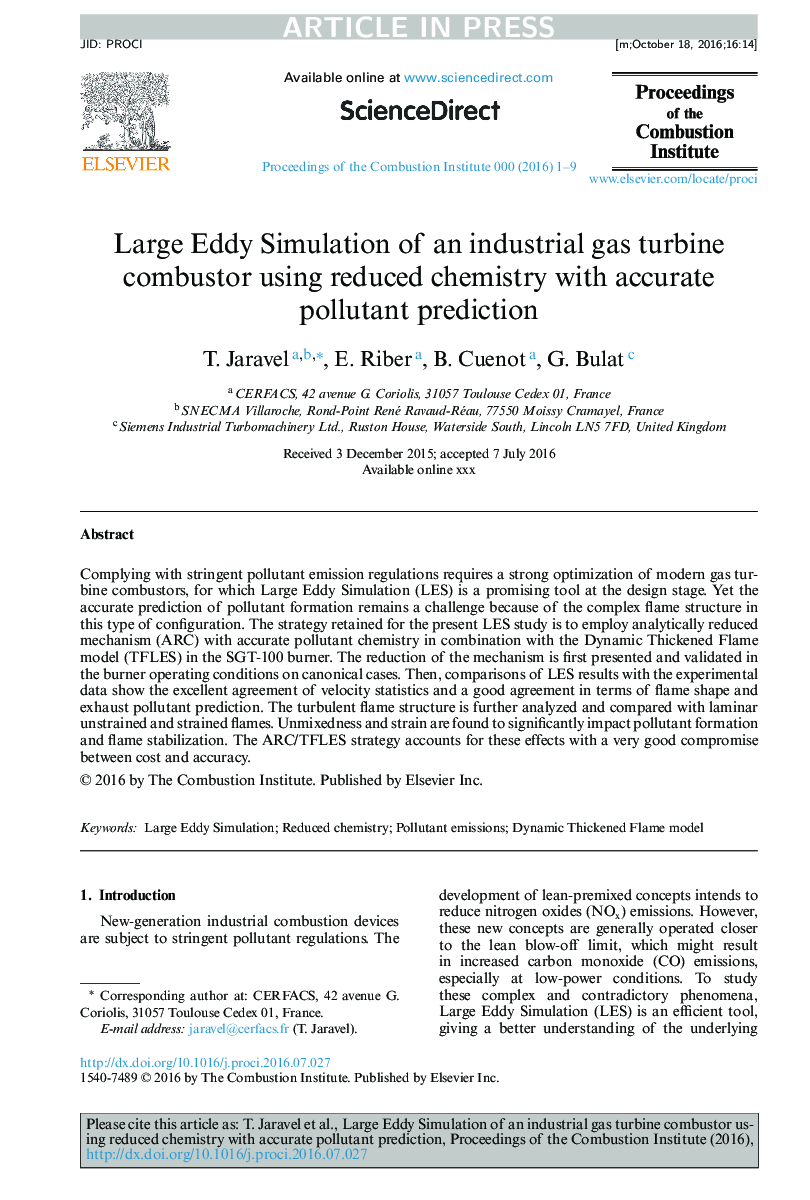| Article ID | Journal | Published Year | Pages | File Type |
|---|---|---|---|---|
| 4915439 | Proceedings of the Combustion Institute | 2017 | 9 Pages |
Abstract
Complying with stringent pollutant emission regulations requires a strong optimization of modern gas turbine combustors, for which Large Eddy Simulation (LES) is a promising tool at the design stage. Yet the accurate prediction of pollutant formation remains a challenge because of the complex flame structure in this type of configuration. The strategy retained for the present LES study is to employ analytically reduced mechanism (ARC) with accurate pollutant chemistry in combination with the Dynamic Thickened Flame model (TFLES) in the SGT-100 burner. The reduction of the mechanism is first presented and validated in the burner operating conditions on canonical cases. Then, comparisons of LES results with the experimental data show the excellent agreement of velocity statistics and a good agreement in terms of flame shape and exhaust pollutant prediction. The turbulent flame structure is further analyzed and compared with laminar unstrained and strained flames. Unmixedness and strain are found to significantly impact pollutant formation and flame stabilization. The ARC/TFLES strategy accounts for these effects with a very good compromise between cost and accuracy.
Related Topics
Physical Sciences and Engineering
Chemical Engineering
Chemical Engineering (General)
Authors
T. Jaravel, E. Riber, B. Cuenot, G. Bulat,
